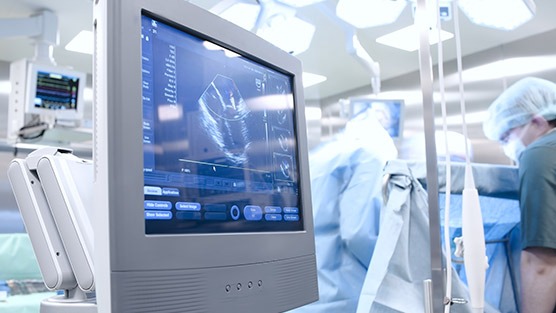- About
- Services
- Patient Info
- Patient Education
- Blog
- Contact
Benign Prostatic Hyperplasia, or BPH as it is commonly abbreviated, is the noncancerous enlargement of the prostate gland which commonly occurs in men aged 45 to 70.
The prostate gland is a vital component of the male reproductive system, secreting a fluid into the urethra during ejaculation. It is located immediately below the neck of the urinary bladder, surrounding the urethra.
When the prostate starts to grow in size, the gland will begin to press against and squeeze the urethra. The wall of the bladder will gradually become thicker because of the increased pressure. Inevitably, the bladder will significantly weaken and lose the capacity to completely empty urine from the bladder. The narrowing of the urethra in addition to the inability to completely empty the bladder will attribute to many of the issues connected with benign prostatic hyperplasia.
Left untreated, BPH may cause more severe problems, including bladder and kidney problems, urinary tract infections or even incontinence.
Benign Prostatic Hyperplasia causes
Despite past and ongoing research, the exact cause for BPH is not fully understood. Some researchers suggest that it may be related to an increase in the level of dihydrotestosterone, a testosterone derivative in the prostate that may influence cells’ growth.
At first, the majority of men who have BPH do not have any discernible signs or symptoms of the condition. However, when symptoms do begin to occur they can range from mild to severe but the severity of the symptoms is not necessarily associated with the amount of prostate growth. For example, a patient with a significant amount of prostate enlargement may only have mild symptoms while another patient with minimal prostate growth may have more severe symptoms.
BPH Symptoms may include:
- Weak urinary stream
- Difficulty starting urination
- Frequent urination
- Urinary urgency
- Inability to completely empty the bladder
- Leaking or dribbling of urine
- Repeated urinary tract infections
- Blood in the urine (Hematuria)
- Frequent urination during the night time (Nocturia)
Benign Prostatic Hyperplasia (BPH) diagnosis
Your doctor will begin by asking you a series of detailed questions related to your symptoms, evaluate your complete medical history and perform a full physical examination. Some of the diagnostic procedures used to diagnose BPH might include:
- Digital Rectal Exam (DRE) : The Digital Rectal Exam (DRE) is a procedure in which the doctor will insert a lubricated gloved finger into the rectum in order to examine the prostate gland for prostate enlargement, abnormalities, and any signs of cancer.
- Urinary Flow Test : The Urinary Flow test is a procedure in which your doctor will have you urinate into a repository attached to a device. The device is designed to measure the strength and volume of your urine flow. The results from this test help your doctor determine the severity of your condition and how to efficiently address your condition.
- Cystoscopy : A Cystoscope is an optic instrument with a lighted tip. The process of inserting this instrument through the urethra to thoroughly examine the bladder and urinary tract is called a Cystoscopy. Your doctor will be looking specifically for any obstructions or abnormalities that will help to determine the severity of your condition.
For the majority of men with BPH, the prostate will continue growing until a medical intervention will become necessary. With the help of a urologist, each man will develop an individualized treatment plan with which they are both comfortable. Below are the currently available treatment options.
BPH non-surgical treatments
Watch and Wait

For relatively mild symptoms with no significant effect on a man’s quality of life, or men with medication sensitivities, or when surgery presents undue hazard, this can be an a great option. With general subsequent meet-ups, the doctor screens the advancement of the infection and the man’s symptoms. This is regularly utilized as a temporary option due to the fact that the prostate will continue to grow until a more advanced treatment regimen will be necessary.
Advanced treatment may get to be prudent in spite of the level of the man’s uneasiness due to the potential for hurting the urogenital territory. After some time, the wall of the bladder may thicken and the muscles may be weakened to the point that it can not totally discharge itself. This can lead to urinary tract infections, This retention of urine, bladder stones, damage to the urinary and reproductive organs, and, if these conditions persist, urine may back up to the kidney, eventually causing kidney stones and possibly renal disease.
Medication Therapy

This treatment option requires a man to take medication for the reminder of his life. The benefit of this option is that these medications are very effective. The downside is their side-effects, some of which are sexual functioning issues, making this option unacceptable to some men.
Medications are separated into three groups: those which relax the muscles of the prostate and lower bladder allowing the urethra to open; those which retard and/or shrink the growth of the prostate; and those which increase bladder capacity.
- 5- Alpha Reductase Inhibitors These medications prevent prostate growth and may even shrink the prostate. It may take up to 6 months to see the full effects of ARIs. They are very effective but may cause erectile dysfunction or/and retrograde ejaculation. There are 2 main types of 5-alpha reductase inhibitors: Finasteride (Proscar) and Dutasteride (Avodart).
- Alpha-blockers Alpha-blockers have the role of relaxing the muscles in the bladder and prostate for an improved flow of urine. Usually, men see improvement in their symptoms right after they start taking them. It is important to know that they may affect blood pressure, causing dizziness, fatigue, and headaches. Cardura and Flomax are the most recommended alpha-blockers.
- Phosphodiesterase 5-Inhibitors This type of medication is also used in the treatment of ED (Erectile Dysfunction). It works by smoothing the muscles in the bladder, easing BPH symptoms. FDA approved only a medication of this type, named Cialis (Tadalafil). It may cause headaches and back and muscle pain.
- Combination of medications The doctor may recommend a combination of 2 or more medications for a more effective treatment.
- Finasteride and doxazosin
- Dutasteride and Tamsulosin (combine din one pill – Jalyn)
- Alpha-blocker and drugs used to treat an overactive bladder
Surgical Interventions for BPH

Because of the many side-effects caused by BPH medication, the most important being erectile dysfunction, and the fact that they require life-long intake, more advanced procedures were developed in order to provide long-lasting symptoms relief while preserving the sexual function.
Surgical options may be invasive or minimally invasive depending on whether or not the tissue is cut.
The UroLift System:
The UroLift system was developed with the aim of effectively treating BPH while preserving sexual function. It is a one-time procedure performed in a doctor’s office, without requiring hospitalization. Currently, it is considered the only treatment for BPH that preserves the erectile and ejaculatory function.
Urolift is a minimally invasive procedure that does not involve tissue cutting or heating. It can be performed under local anesthesia and ensures a very short recovery period.
The entire procedure consists of introducing 4 tiny implants made to lift the prostate and hold it in place. This way, the UroLift system addresses the root of the problem, the urethral blockage. Once the urethra is no longer obstructed by the enlarged prostate, the urine flow is significantly improved.
Due to the numerous benefits provided, including the preservation of the sexual function, the UroLift System is considered a top treatment for BPH.
Open Prostatectomy:
Historically, BPH was surgically treated by an operation called an Open Prostatectomy which is major abdominal surgery. Performed in a hospital under general anesthesia, the surgeon opens the patient’s abdomen and either removes the gland or cuts off the overgrowth. The patient leaves the operating room with two catheters which stay in for up to a week. This procedure requires a long-term rehabilitation period. Today, prostatectomy is performed when the patient’s prostate has grown too large, there are bladder stones, or when the bladder needs to be repaired at the same time.
Button TURP:
Less invasive than Open Prostatectomy is the more commonly performed TURP (Transurethral Resection of the Prostate). Button TURP and Green Light Laser are the most commonly used less invasive treatment options for BPH. Bipolar cautery vaporization, or button TURP, is a newer, less invasive variation of what has traditionally been the mainstay for treating BPH known simply as TURP. This procedure is done in a hospital or out-patient setting using general anesthesia or epidural or spinal anesthesia with sedatives. Using a resectoscope, the surgeon enters the urethra through the penis and cuts away pieces of the overgrown gland using electricity. At the end of the procedure, a urinary catheter is put in the patient and is removed either in recovery or the next day. This procedure takes about 90 minutes and the patient may be discharged on the day of or day after. The initial recovery period allows for a return to daily activities in about a month. The benefit of this procedure is its safety and effectiveness in opening the urinary route.
If you consider your symptoms worrisome, do not delay seeing your doctor. Specialized advice is always best to follow.
